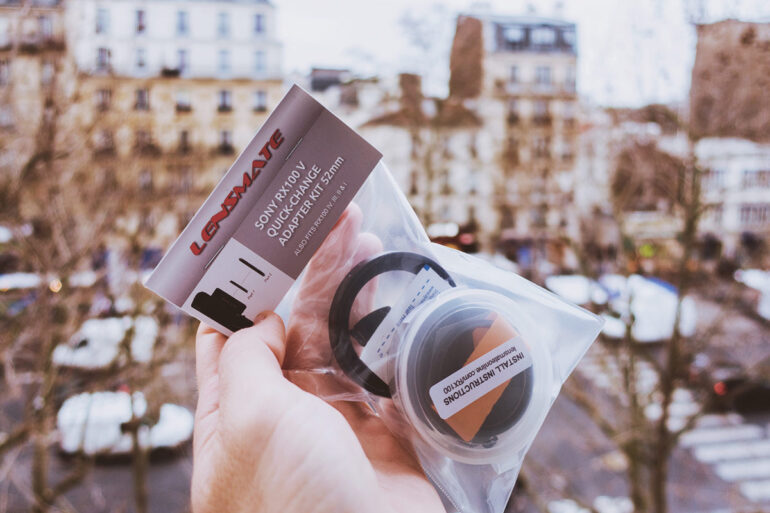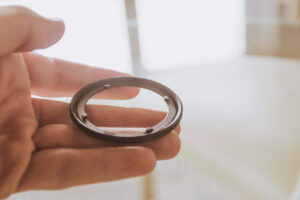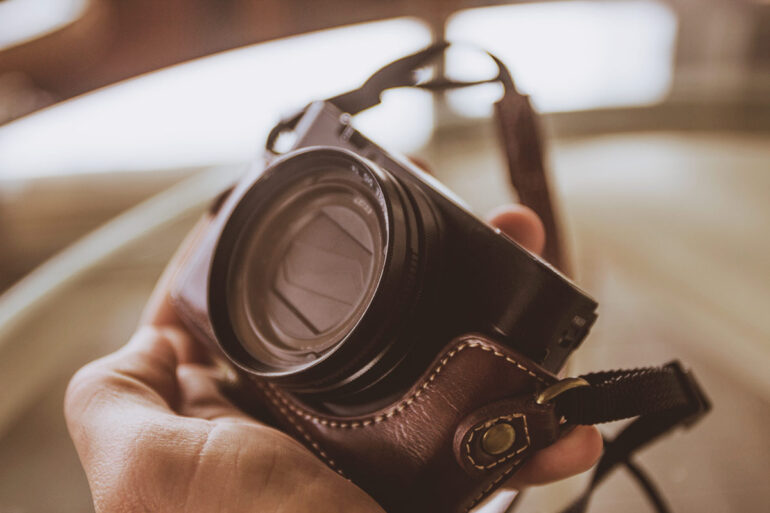We may earn a commission when you purchase through affiliate links. Learn more.
As a long exposure junkie and a lover of deep blue skies, I’ve nearly always got a filter on my camera lenses. In my opinion, a filter thread is one of those essential things that every lens and certainly every advanced compact camera really should come with as a standard feature, but unfortunately, the makers of many otherwise excellent cameras seem to disagree. Luckily there’s an easy way to remedy this, because you shouldn’t need an interchangeable lens camera in order to benefit from polarizing filters, neutral density filters, and whatever other filters your photographic heart desires to use.
Since I often shoot with the Sony RX100 III, the middle sibling in Sony’s RX100 lineup, I checked out Sony’s filter adapter, the Sony VFA49R1, but according to customer reviews this 49mm filter thread adapted only seems to work with the Sony RX100 and RX100 II and it’s notably absent from Sony’s website as a compatible accessory as well. Looking for a third party solution, I came across Lensmate, a company that produces adapters for a whole host of cameras, including the Sony RX100 series; the Canon G5X; Canon G7X and G7X Mark II; Canon G15 and G16; and the Panasonic LUMIX DMC-ZS100/TZ100. Besides filter adapters, they sell functionality improving accessories for an even wider range of cameras, including several mirrorless models.
The Lensmate Quick-Change Filter Adapter Kit features a small receiver which bayonets onto a threaded 52mm filter holder – a much more convenient system than screwing a filter onto a lens each time you want to use it. As a nice bonus, a lenscap with a cord to help prevent losing it is included as well, to help keep your 52mm filters smudge-free.
Installing the Lensmate Filter Adapter
Installation of the receiver takes less than a minute: you clean the mounting area with the little alcohol wipe to remove any dirt and oil, let it quickly dry, and then put the round installation tool over the lens to help you center the receiver. To uncover the adhesive, you peel the backing off the receiver and then line it up with the orange tape parallel to the camera’s top edge. Press it down, take the guide off, and voila! Now you’ve got a convenient filter adapter that is so ingenious it really should be included with compact cameras. A quick twist of the filter holder onto the receiver locks everything securely in place.
The Lensmate receiver is removable as well, and a removal tool is included in the kit. Because the adhesive may not hold as strongly if you remove the receiver and then put it on again, they recommend using new adhesive each time you reattach it. A little superglue would probably make this a more permanent part of your camera, although supergluing things to your camera is probably not recommended in the user manual.

Real World Testing
 In my opinion, having a filter on the Sony RX100 III not only improves functionality but also makes the camera look pretty stylish – any 52mm filter should screw right onto the filter holder, and with a step-up ring, you can use larger filters as well. For photographers like myself who shoot with a few different cameras as well as multiple lenses, step up rings are a very cost-efficient way of using larger filters on lenses with smaller filter thread sizes.
In my opinion, having a filter on the Sony RX100 III not only improves functionality but also makes the camera look pretty stylish – any 52mm filter should screw right onto the filter holder, and with a step-up ring, you can use larger filters as well. For photographers like myself who shoot with a few different cameras as well as multiple lenses, step up rings are a very cost-efficient way of using larger filters on lenses with smaller filter thread sizes.
Once you’ve got the Lensmate receiver installed on the camera lens, the receiver and filter holder attach quickly and smoothly and if you have different filters that you want to use individually and want to really streamline your photo-shooting workflow, you can purchase additional filter holders from Lensmate directly.
 One issue I encountered is that because the adapter bayonets on rather than screws on (which makes removing a filter a quick and easy process) the attachment points on the back of the filter holder allow a small amount of light to leak in — not a problem when shooting at regular shutter speeds, but for long exposures it can create a noticeable light leak in your images, especially if you’re shooting with the sun or another light source at your back. It took me a few shots to figure out why my first daytime long exposures with this filter adapter and a 10 stop ND filter had small light leaks in two opposite corners of the photos.
One issue I encountered is that because the adapter bayonets on rather than screws on (which makes removing a filter a quick and easy process) the attachment points on the back of the filter holder allow a small amount of light to leak in — not a problem when shooting at regular shutter speeds, but for long exposures it can create a noticeable light leak in your images, especially if you’re shooting with the sun or another light source at your back. It took me a few shots to figure out why my first daytime long exposures with this filter adapter and a 10 stop ND filter had small light leaks in two opposite corners of the photos.
Once I looked things over, my quick and easy solution was to put a little piece of black electrical tape (I always carry a roll of it in my bag – it’s only $1 a roll and comes in handy all the time) over the two attachment points — no more light leaks. If you don’t shoot long exposures, and especially not daytime long exposures, this probably isn’t an issue you’ll need to worry about in most situations.
Even with a few filters stacked in combination with a step-up ring, everything seems very secure and there certainly doesn’t seem to be any risk of the adhesive randomly failing, although it’s important to remember that it’s not an entirely permanent part of the camera, so you shouldn’t pick the camera up by grabbing the filter. Because I also use my RX100 III in an underwater dive housing which has tight clearance for the lens, I need to be able to remove the receiver, so the included removal tool is a nice addition to the kit as well. Replacement adhesive rings are available from Lensmate as well.
All in all, the Lensmate filter adapter is an excellent value that greatly increases the versatility of advanced compact cameras. The ability to use polarizing filters and neutral density filters is a real game changer that makes leaving bigger mirrorless and DSLR cameras at home an easier decision to make when traveling.
Thoughts After a Year+ of Heavy Use
I’ve been using the Lensmate filter adapter for more than a year now. It’s still a piece of gear that I like and find to be an essential part of any small camera kit. It’s worth noting that after prolonged and frequent usage, the two spring-like plastic tabs that help secure the filter holder to the receiver no longer hold a filter on quite as securely as when they’re brand new and it becomes a bit easier for a filter to be bumped loose from the front of the camera. If you’re not careful, it can be easy to drop or lose a filter if the filter holder isn’t holding it as tightly as it originally did. Be sure to make sure the adapter is completely attached and secure before you go pointing your camera over the edge of a cliff!
Fortunately, if you notice that the filter holder isn’t holding things quite as securely as it once was, additional filter holders can be purchased separately from Lensmate for much less than the cost of an entire new kit.
The links below will take you to the Amazon pages for the corresponding Lensmate 52mm Quick-Change Filter Adapter Kit:

